How can payroll and HR software support payroll professionals & practitioners?
Understandably, there’s been a great deal of focus on employee wellbeing this year. All the signs are that the pandemic’s taken a profound toll on how employees are feeling, and the state of their mental health. It’s absolutely right that companies are doing everything they can to mitigate the impact and help employees deal with the pressure and uncertainly that’s been created.
With all this going on, it’s very easy to overlook two functions that have key roles in supporting the wellbeing of other employees in their company – HR and Payroll. While they’re working hard to take care of others, could their wellbeing get overlooked?
HR and payroll have faced unprecedented challenges this year

This research, conducted before the pandemic, found that many HR managers were already likely to be struggling with their mental health. While supporting others can be something that creates a strong sense of purpose, it doesn’t alter the fact that HR can frequently find itself “caught in the middle”. It’s often required to support the wellbeing of the organisation and manage its people while also handling all of the day-to-day operational requirements. HR can end up being the ones who create and implement wellbeing policies – but aren’t expected to need them personally. Yet continually putting the requirements of others first can take its toll, as can feeling like they should be the ones setting the example for ‘perfect’ wellbeing.
Payroll professionals are another group that have found themselves under tremendous pressure, managing the implications of all the various emergency payroll legislation changes this year. They have had the burden of ensuring employees are being paid correctly, particularly at a time when those employees might be under financial pressure and getting the wrong payment would add to the stress.
The size of the task has been immense for both functions: last-minute policy changes on furlough, awaiting official guidance which was slow to be released yet needed to be acted on quickly, the job support scheme suddenly being placed on hold at the last minute… it has felt like an almost constant barrage of uncertainty and sudden changes. It’s no wonder that HR and payroll professionals & practitioners are feeling the strain.
How can companies make the burden more manageable on a sustained basis?

There are various things companies can do short term to support all employees, including HR and payroll employees. Simply acknowledging the issue, and asking how the company can support better self-care, is a starting point. Enabling ways to access help, whether through supportive line managers or peer networks, can boost wellbeing as can encouraging employees to use external sources like employee assistance programmes if they’re available.
That can help the here-and-now. But it’s vital companies are also addressing the longer term too. That could be things like greater flexibility and more choice with working patterns. But it also includes looking carefully at workloads and considering what tools are available to support day-to-day working life.
In what ways can payroll software and HR software help?

- It makes workloads more manageable
Payroll software and HR software can handle work that would otherwise have to be done manually. That can be more time-consuming, potentially resulting in more errors, and ending up being a significant cause of stress.
Reducing the amount of time spent on transactional activities creates more time to focus on strategy and deal with the rest of the workload. It also gives more time to talk and connect with others: important for everyone’s wellbeing, including HR and payroll practitioners. Having more time to deal with the human side, opening up conversations and talking through issues, makes it a lot easier for HR and payroll to take positive steps to manage both other employees’ and their own wellbeing more effectively.
- Reporting is simplified
There’s a lot of pressure on HR and payroll to provide reports that they rely on themselves, and that are also needed by others in the business to make operational decisions. That can put both functions under pressure. They must provide the precise information needed, ensuring it’s up-to-date and accurate, by the deadline.
Effective HR and payroll software can be quickly and easily interrogated to provide the information needed, quickly delivering reports once the necessary parameters are selected – and taking at least some of the pressure off those charged with providing them.
- Payroll software can be part of a managed payroll solution
A managed payroll service can offer an even greater level of support. It comes with all the benefits of using the cloud-based payroll software itself, and control can be retained with in-house management and data input. But it also offers another layer of support by enabling payroll processing tasks to be outsourced to whatever extent needed, relieving some of the burden of making sure employees are paid accurately and on time.
- The pressure of monitoring every detail of legislation is reduced
One of the challenges both HR and payroll professionals face is keeping track of legislation and ensuring compliance. This year, it’s been especially overwhelming. Trying to manage any aspect of it manually will have been complex and draining.
Cloud-based HR and payroll software updates ease a lot of that pressure, carrying out all calculations, and making payments and deductions, in line with the most up-to-date regulations and requirements.
The expectations, demands and workload on HR and payroll have never been higher. Companies must do everything possible to equip them to cope with the challenges.

By providing HR and payroll employees with high quality software, organisations are creating the conditions for better wellbeing, ensuring effective support in managing workloads and meeting the continual stream of deadlines.
If you would like more information about our payroll and HR software, and managed payroll services, then please do contact our team for a chat to learn more.

